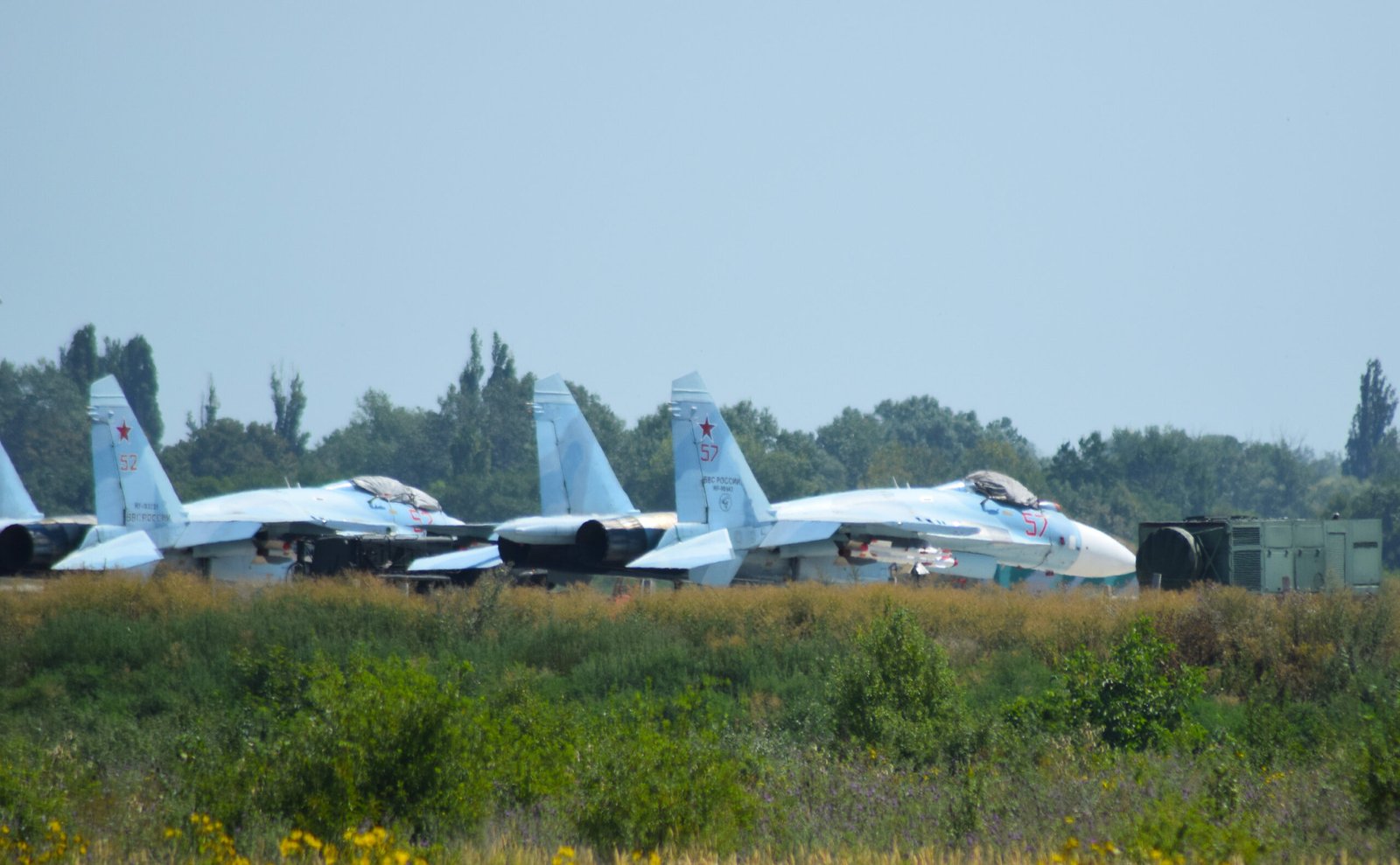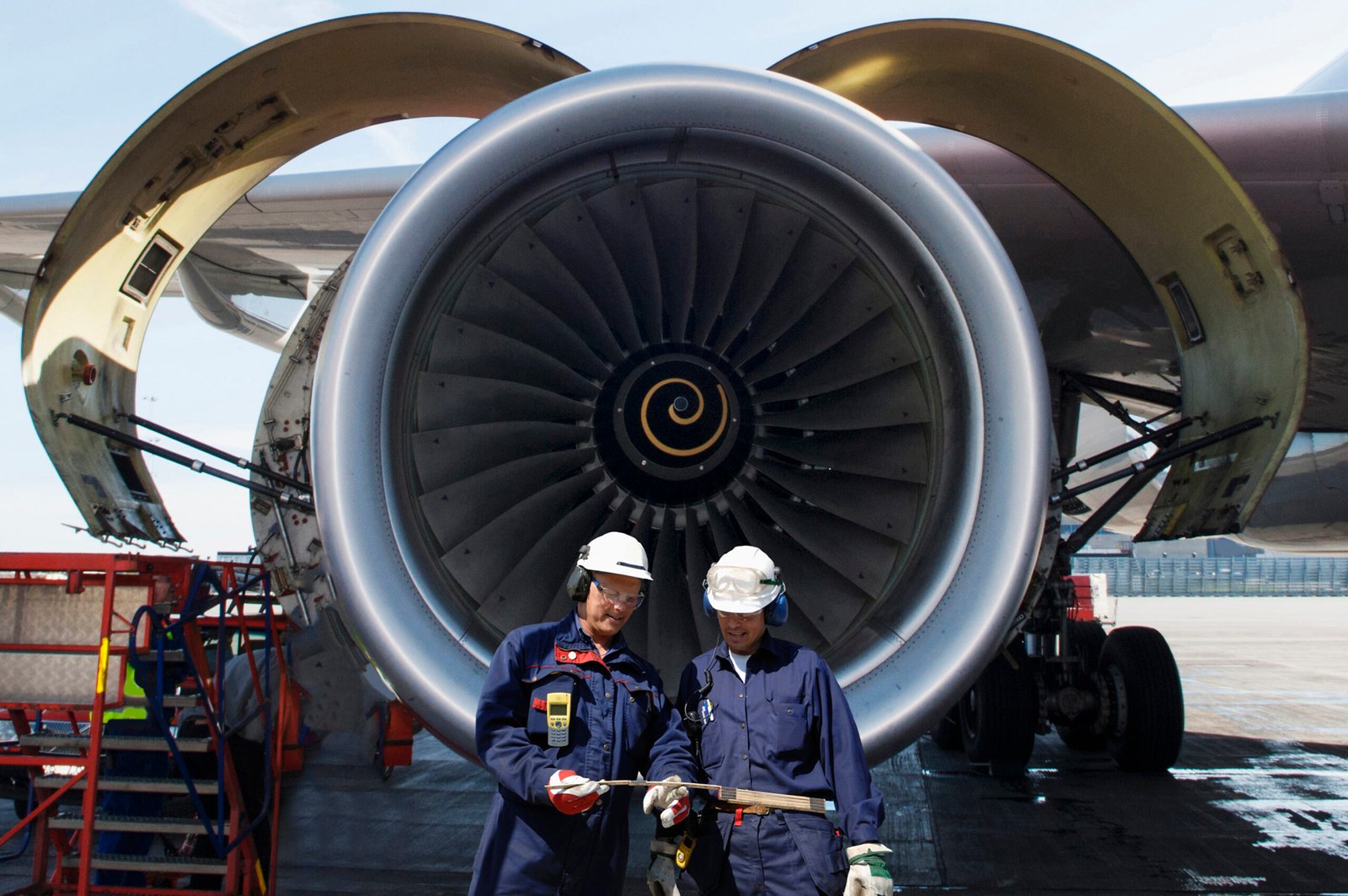poppanew
Cleared for Takeoff: Tips for Nervous Flyers to Conquer Their Fears
Flying can be a daunting experience, especially for those who feel a twinge of anxiety at the mere thought of boarding an aircraft. However, understanding aviation and surrounding yourself with supportive resources can help ease those nerves. Whether you’re considering becoming a pilot or simply hoping to find ways to calm your fears before your next flight, here are some insightful tips that may just help you conquer the skies.
### Aviation Schools by Types of Courses
If you’ve ever dreamed of taking control of the cockpit, aviation schools offer various programs tailored to different interests and skill levels. Here’s a brief overview:
1. **Private Pilot License (PPL)** – This foundational course is perfect for beginners looking to gain basic flying skills and understand aircraft operations.
2. **Commercial Pilot License (CPL)** – For those seeking a career in aviation, this advanced course focuses on professional flying techniques and regulations.
3. **Instrument Rating** – This training allows pilots to fly in various weather conditions using instruments alone, which adds an essential layer of safety.
4. **Flight Instructor Certification** – Experienced pilots can transition into teaching others how to fly while honing their own skills.
5. **Aerospace Engineering Programs** – For the technically inclined, these courses cover everything from aircraft design to systems engineering.
These options not only prepare aspiring pilots but also provide insight into what it takes to navigate through clouds and skies confidently!
### Lists of Aviation Blogs, Websites, Social Media Sites
In today’s digital age, there’s a wealth of information available at your fingertips that can demystify flying and provide valuable insights into the world of aviation. Here are some popular platforms worth checking out:
**Blogs**:
– *The Airline Reporter*: Offers industry news and personal stories from frequent flyers.
– *FlightChops*: A YouTube channel focusing on pilot experiences and flight lessons.
**Websites**:
– *AOPA (Aircraft Owners and Pilots Association)*: Provides resources for pilots and enthusiasts alike.
– *Pilot Institute*: A fantastic resource for online training courses that cater specifically to nervous flyers.
**Social Media Platforms**:
– Instagram accounts like @pilotlife showcase stunning aerial photography alongside relatable pilot stories.
– Twitter handles such as @FlyingMag share articles about aviation trends and safety tips in bite-sized posts.
Engaging with these resources can foster camaraderie among fellow aviation lovers while providing reassurance through shared experiences.
### FAA Flight Schools/Airplane Schools/Simulators
For those serious about flying but still feeling apprehensive, enrolling in FAA-approved flight schools might just be your golden ticket! These schools offer structured learning environments where students receive both theoretical knowledge and practical hands-on experience.

Additionally, modern simulators have become game-changers in pilot training; they allow nervous flyers to practice maneuvers without leaving solid ground. Many flight schools now incorporate state-of-the-art simulators into their programs—this not only builds confidence but also prepares students for real-world scenarios without any pressure.
Whether you’re simply looking to overcome fear or contemplating a career change, diving into the world of aviation opens up numerous avenues. Remember: every seasoned flyer was once a nervous beginner! Surround yourself with positivity—like engaging communities online—and equip yourself with knowledge from credible sources; soon enough, you’ll be ready for takeoff!
The Skyline Promise: Exploring the Fascinating World of Urban Air Mobility
The horizon is shifting, and with it comes an exhilarating revolution in aviation—urban air mobility (UAM). This dynamic field blends cutting-edge technology with the promise of transforming how we navigate our cities. As we delve into this fascinating world, it’s essential to understand that the future of flight not only relies on innovative aircraft but also on a robust foundation built through aviation and technology training.

To embark on this journey, aspiring aviators must familiarize themselves with various educational avenues. Traditional flight schools have long served as pillars for pilot training, but now they are evolving alongside new technologies. The Federal Aviation Administration (FAA) has recognized the importance of adapting to these changes by accrediting numerous flight schools across the country that focus on emerging sectors like UAM. These institutions offer comprehensive programs that include hands-on experience with cutting-edge simulators and real-world flying scenarios.
Simulators play a crucial role in modern pilot training; they provide invaluable opportunities for students to hone their skills without stepping foot into an actual aircraft. With advancements in virtual reality (VR) and computer-generated environments, pilots can practice complex maneuvers or emergency protocols safely and effectively. Schools such as Embry-Riddle Aeronautical University and ATP Flight School are at the forefront, integrating technology into their curricula to produce highly skilled pilots ready for tomorrow’s challenges.
In addition to formal education, staying informed about industry trends is vital for anyone passionate about aviation and urban air mobility. Engaging with online communities can enhance your knowledge base immeasurably. There’s a wealth of resources available through blogs, websites, and social media platforms dedicated to aviation enthusiasts.
Some noteworthy blogs include:
1. **Flying Magazine** – A classic source offering insights into both recreational flying and technical advancements.
2. **Air & Space Magazine** – Delves deeper into aeronautics history while keeping readers updated on contemporary innovations.
3. **PILOT Magazine** – Focused specifically on pilots’ experiences, gear reviews, and operational tips.
For those who prefer websites over traditional blogging formats, consider visiting:
**Aviation Week Network** – Comprehensive coverage of all things aerospace including commercial aviation updates.
**AvGeekery.com** – A hub for passionate aviation geeks showcasing everything from airline news to aircraft spotting tips.
Social media platforms are also treasure troves for real-time information and community interaction within the aviation sphere:
**Instagram** boasts aerial photography accounts that showcase stunning views from above.
**Twitter** serves as a fast-paced platform where industry professionals share breaking news.
**YouTube channels like “Mentour Pilot” or “Captain Joe” provide engaging visuals coupled with informative commentary about flying.
As urban air mobility continues its ascent—the promise of personal drones zipping through cityscapes becoming more tangible—it is imperative that budding aviators embrace both traditional learning paths and modern digital landscapes.
With every new innovation comes responsibility; thus, pursuing quality education remains paramount in ensuring safety within UAM systems. Whether you’re navigating through FAA-accredited flight schools or exploring dynamic online resources—a commitment to continuous learning will prepare you for this remarkable shift in how we view transportation.
So strap in! The skyline awaits your exploration—a mesmerizing blend of technology promising a future where urban skies become just as bustling as city streets below!
Aviation Wonders: Exploring the World’s Most Extraordinary Airports
The world of aviation is an ever-evolving marvel, a tapestry interwoven with technology and human ingenuity. As we soar through the skies, our journey begins even before we board those sleek aircraft. Have you ever considered how training for such adventures unfolds? Aviation and technology training, particularly through sophisticated simulators, plays a crucial role in preparing pilots for the challenges they face. With realistic scenarios and immersive environments, these simulators allow aspiring aviators to hone their skills without leaving the ground.
But let’s not forget that the aviation community extends far beyond just pilots and planes. There exists a wealth of information available online for enthusiasts eager to learn more about this fascinating field. If you’re looking to dive deeper into aviation culture or perhaps stay updated on trends and news, consider exploring popular aviation blogs and websites like AirlineReporter, The Points Guy, or AOPA (Aircraft Owners and Pilots Association). Social media platforms are also teeming with vibrant communities; join hashtags like #aviationphotography on Instagram or follow Twitter accounts dedicated to flight updates.
For those seeking structured education in aviation, online courses abound! Ground schools offer comprehensive programs covering everything from air navigation to meteorology. Many well-respected institutions provide accredited online courses catering to different levels of expertise—whether you’re a novice pilot or someone looking to expand your knowledge base as an airline operations manager. Organizations like Embry-Riddle Aeronautical University and Purdue University Global have made significant strides in delivering quality online education tailored for future aviation leaders.
As one delves deeper into this field, career opportunities become increasingly enticing. Pilot jobs remain at the forefront of many people’s ambitions, but there are numerous paths within the industry—ranging from air traffic control positions to roles in aircraft maintenance engineering. The Federal Aviation Administration (FAA) website is a treasure trove of resources where potential pilots can find valuable links about licensing requirements, medical certifications, and ongoing career developments.
In recent years, drones have emerged as exciting players within aviation’s expanding universe. These unmanned aerial vehicles (UAVs) have revolutionized various sectors—from agriculture monitoring to search-and-rescue missions—while also sparking new discussions around regulations and safety standards. The FAA has been proactive in establishing guidelines for drone usage; it’s essential for operators to familiarize themselves with these rules if they wish to take flight responsibly.

So why should you explore these extraordinary airports worldwide? Each terminal tells its own story—a journey marked by cultural significance, architectural brilliance, or sheer operational complexity. Think of Changi Airport in Singapore with its stunning butterfly garden or Incheon International Airport’s breathtaking art installations! Airports serve as gateways not only across geographical boundaries but also into realms rich with history and adventure.
As we reflect upon the wonders of aviation—from rigorous training methods and educational resources to groundbreaking technologies like drones—we recognize that every aspect contributes profoundly to our shared experience as global travelers. So buckle up! The sky awaits your exploration!
From Vintage to Modern: A Journey Through Aviation History
Aviation, a realm where dreams take flight, has witnessed an extraordinary evolution from its humble beginnings in the early 20th century to today’s high-tech marvels. As we traverse this fascinating journey through aviation history, it’s crucial to recognize how technology and training have reshaped the industry, paving the way for aspiring pilots and enthusiasts alike.
Let’s start with technology training — a cornerstone of modern aviation. Simulators have become indispensable tools for pilot training. Gone are the days when novice aviators would take their first shaky flight in a real aircraft. Today’s simulators offer an immersive experience that mimics various flying conditions, from serene skies to stormy turbulence. These advanced systems allow trainees to familiarize themselves with aircraft controls and emergency scenarios without leaving the ground, significantly enhancing safety and confidence.
For those looking to dive deeper into aviation knowledge, numerous online resources exist. Blogs like “The Pilot’s Lounge,” “AirlineReporter,” and “Flying Magazine” provide insights into industry trends, pilot experiences, and technological advancements. Websites such as AOPA (Aircraft Owners and Pilots Association) offer up-to-date information on regulations and safety tips while fostering a vibrant community of aviation enthusiasts. Social media platforms like Instagram and Twitter have also become hotspots for aviation lovers. Accounts such as @aviationdaily showcase stunning aerial photography alongside news articles that keep followers informed about current events in aviation.

When it comes to formal education, online courses and ground schools have revolutionized pilot training accessibility. Platforms like Coursera and Udemy feature comprehensive courses designed by industry professionals that cover everything from basic aerodynamics to advanced navigation techniques. Ground schools prepare aspiring pilots for written examinations required by regulatory bodies like the FAA (Federal Aviation Administration). These programs offer flexibility for busy individuals balancing work or family commitments while pursuing their dream of soaring among the clouds.
Speaking of careers in aviation, job prospects abound! The demand for qualified pilots continues to grow due to increasing air travel worldwide. Airlines are on the lookout for well-trained candidates who can seamlessly transition from simulators to cockpits. Opportunities don’t stop at airlines; corporate jets, freight carriers, agricultural aviation — each presents unique career pathways catering to diverse interests.
In recent years, drones have emerged as game-changers within both recreational activities and commercial enterprises. These unmanned aerial vehicles are no longer just toys but tools used in various fields including agriculture, photography, delivery services, and even search-and-rescue missions! With drone technology advancing rapidly, regulatory bodies like the FAA are continuously updating guidelines regarding drone operation ensuring safety remains paramount.
To stay informed about these developments or seek guidance navigating through endless opportunities within the field of aviation consider visiting official FAA links which provide essential resources ranging from licensing requirements to safety regulations. Whether you’re an aspiring pilot eager for guidance or a seasoned professional seeking ongoing education—these resources connect you directly with valuable information at your fingertips.
In conclusion, as we reflect upon our journey from vintage biplanes taking flight over open fields to today’s sleek jetliners soaring above urban landscapes; one thing is certain—aviation will continue evolving at an unprecedented pace fueled by innovation in technology coupled with passionate individuals committed towards progress within this thrilling industry! So buckle your seatbelt; the future of flight awaits!

Flying Into the Future: The Latest Innovations in Aviation Technology
The aviation industry stands on the brink of a technological revolution, blending tradition with cutting-edge innovations. From training pilots with advanced simulators to the rise of drones and online learning platforms, the future is taking flight in ways we could hardly imagine just a decade ago. Let’s delve into some of the latest advancements transforming how we approach aviation.

*Aviation and Technology Training: Simulators**
Gone are the days when aspiring pilots had to rely solely on real aircraft for training. Today, flight simulators have become an integral component of pilot education. These sophisticated tools replicate real-world flying conditions with stunning accuracy, allowing trainees to experience everything from routine maneuvers to emergency situations without leaving the ground.
Modern simulators incorporate virtual reality (VR) technology, making training sessions immersive and realistic. Learners can engage in simulated flights that mimic weather changes or mechanical failures, thus better preparing them for actual flight scenarios. This innovative training not only enhances safety but also optimizes costs associated with traditional flight instruction.
*Essential Aviation Blogs and Resources**
For those who want to stay informed about ongoing developments in aviation technology, numerous blogs and websites serve as valuable resources:
1. **The Points Guy** – Focuses on travel tips and airline news.
2. **Airliners.net** – A community-driven site showcasing photos and discussions on aviation topics.
3. **Aviation Week** – Offers insights into aerospace trends, technology advancements, and industry analysis.
4. **FlightGlobal** – Provides updates on airlines, aircraft manufacturers, and regulatory changes.
5. **Jetwhine** – A mix of opinions on aviation issues along with entertaining stories from pilots.
Social media platforms like Twitter feature hashtags such as #AvGeek or #PilotLife that connect aviation enthusiasts globally. Following accounts of airlines, flight schools, or influential aviators can keep you updated while also building your network within this exciting field.
*Online Aviation Courses: Ground Schools & Careers**
The advent of online education has made it easier than ever to pursue a career in aviation without geographical constraints. Many organizations offer comprehensive online courses that cover foundational knowledge essential for aspiring pilots or those looking to start careers in ground operations.
These courses often include Ground School programs that prepare students for FAA certification exams while providing flexible scheduling options—ideal for busy individuals juggling work and study commitments. Platforms like Coursera or Udemy host various programs ranging from introductory pilot training to specialized subjects such as air traffic control or aircraft maintenance.
With growing demand for qualified pilots due to global travel resuming post-pandemic, many airlines actively recruit trained professionals through dedicated job boards like PilotJobs.com or Avjobs.com.
*The Drone Revolution**
Drones have emerged as one of the most intriguing facets of modern aviation technology. With applications ranging from aerial photography to package delivery and agricultural surveillance, these unmanned aerial vehicles (UAVs) are reshaping industries across the board.
Regulatory bodies like the Federal Aviation Administration (FAA) provide guidelines around drone usage ensuring safety while promoting innovation in this sector. Their website offers comprehensive resources about drone registration processes along with information concerning Part 107 licensing—a must-have for commercial drone operators.
In conclusion, as we fly into an exciting future where technology meets traditional practices within aviation, staying updated through reliable sources becomes vital for enthusiasts and professionals alike. Whether it’s embracing simulator training or exploring online courses tailored specifically for aviation careers—or even navigating the new world of drones—the sky truly is not the limit; it’s just the beginning!





